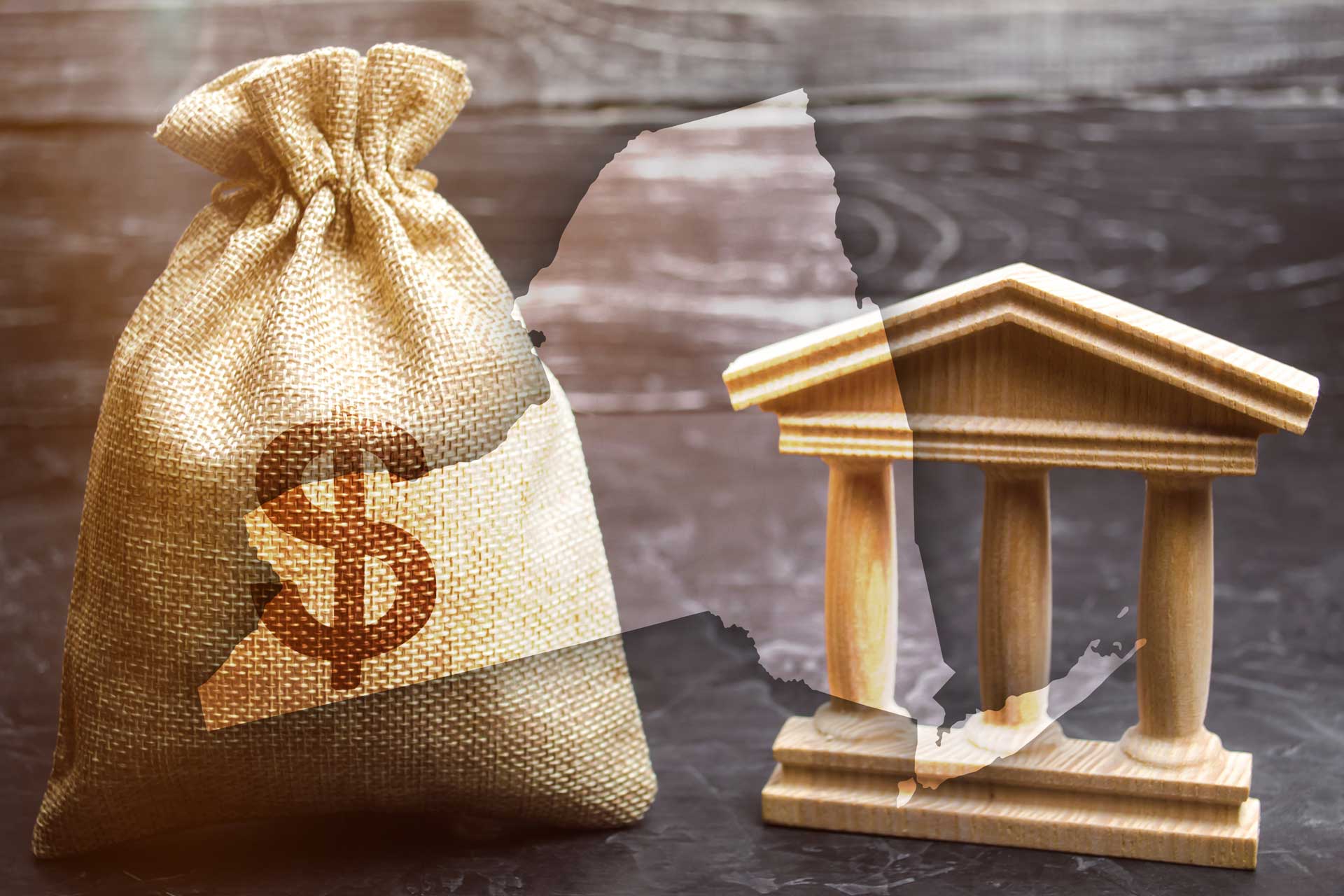There’s something for everyone in Round XII of the Regional Economic Development Council initiative.
Apply using the NYS Consolidated Funding Application by July 29 at 4 p.m. for a variety of funds to help your community thrive.
To help you quickly identify potential funding, we created the following cheat sheet, summarizing and categorizing funding available. Please note: While every effort has been made to ensure accuracy, you can see complete details at REDC Round 12 Program Fact Sheets. Also, a few items fall into more than one category, so you’ll see them posted a couple of times in the table that follows.
If you need a little extra time to explore the funding available, call RBT CPAs. You’ll have a trusted partner to take care of your taxes and accounting so you can focus on learning about and securing funding for your community.
ROUND XII
REGIONAL ECONOMIC DEVELOPMENT COUNCIL INITIATIVE CHEAT SHEET
AGRICULTURE | ||
| NYS Grown & Certified Infrastructure, Technology, Research and Development Grant | $5.8 million in total | Funding is for a grant program that will assist agricultural entities in implementing projects that will invest in critical farm infrastructure, adopting state-of-the-art practices, purchasing innovative technology or equipment, or conduct cutting edge research to aid in the development of new products to meet consumer demand marketed under the New York State Grown & Certified program. |
ENERGY | ||
| NYSERDA Energy Efficiency Programs Funding | Up to $2 million in total | The Flexible Technical Assistance Program provides engineering analysis to help customers make informed energy decisions. The New Construction – Commercial Program offers technical support and financial incentives to identify and install energy efficiency, electrification, and carbon reduction opportunities in non-residential and mixed-use new construction, adaptive reuse, change of use and substantial renovations to existing buildings. |
| NY Power Authority ReCharge New York | Up to 17.9 MW in total | Designed to retain or create jobs through allocations of lower cost electricity to businesses and Not-for-Profit Corporations. There is also power available for businesses expanding operations or relocating to NY. |
ENVIRONMENT RELATED | ||
| NYSERDA Carbon Neutral Economic Development Funding | Up to $10 million in total | Supports the planning, design and installation of economic development projects to operate at carbon neutral or net zero energy performance, or to achieve significant greenhouse gas emissions, or greenhouse gas equivalent emissions, reductions. |
| NYSERDA Commercial and Industrial Carbon Challenge Funding | Up to $15 million in total | Funds between $500k and $5 million to projects that reduce carbon emissions for large commercial and industrial customers (i.e., energy efficiency or process efficiency measures, on-site generation, beneficial electrification, carbon capture, or other proven efficiency or renewable energy technologies). |
| NYS DEC Climate Smart Communities (CSC) Grants | Up to $14 million in total | Funding for municipalities to perform inventories, assessments, and planning projects that advance their ability to address climate change at the local level and become certified Climate Smart Communities. Also supports mitigation implementation projects that reduce greenhouse gas (GHG) emissions from the non-power sector and adaptation implementation projects that directly address climate change threats or alleviate hazards in the community exacerbated by climate changes. |
| EFC Green Innovation Grant Program (GIGP) | Up to $15 million in total | Competitive grants help pay for certain projects that improve water quality and mitigate the effects of climate change through the Green Innovation Grant Program (GIGP). Project must implement a Green Practice (i.e., Green Stormwater Infrastructure, Energy Efficiency, Water Efficiency, and/or Environmental Innovation). |
JOBS/WORKFORCE DEVELOPMENT | ||
| Empire State Development (ESD) Funds — | $150 million in total | Funding for capital-based economic development projects intended to create or retain jobs; prevent, reduce or eliminate unemployment and underemployment; and/or increase business or economic activity in a community or Region. |
| FOR PROFIT ORGANIZATIONS ONLY Empire State Development (ESD) – Excelsior Jobs Program | Up to $75 million in total | Job creation and investment incentives to firms in strategic industries (i.e., software development, scientific research and development, financial services, agriculture, manufacturing, back office, distribution, life sciences, music production and entertainment). Create new jobs or retain existing jobs and make a significant capital investment. Firms in the Excelsior Jobs Program may qualify for up to five, fully refundable tax credits, including a jobs tax credit, an investment tax credit, a research and development tax credit, a real property tax credit and a childcare services tax credit. |
MARKETING | ||
| ESD Market New York | $15 million in total | Funding for tourism marketing initiatives, capital/construction projects and the recruitment and/or execution of special events (i.e., including meetings, conferences, conventions, festivals, agritourism/craft beverage events, athletic competitions and consumer and industry trade shows). |
MISCELLANEOUS | ||
| DOS Brownfield Opportunity Areas Program Grant | Up to $4 million in total | Grants available on a competitive for up to 90% of the total cost of development of a Brownfield Opportunity Area (BOA) Plan; pre-development activities to advance projects within a State-Designated BOA; and Phase II Environmental Site Assessments within a State-Designated BOA. |
| DOS Local Government Efficiency (LGE) Grant | Up to $4 million in total | Funding assistance to local governments to develop projects that reduce the cost of municipal operations and service delivery, with the goal of limiting the growth in property taxes. Assistance is available to implement intermunicipal efforts including shared services and functional consolidations. |
| Federal Industrial Development Bond Cap Program | Up to $300 million in total | Statewide private activity bond allocation (“volume cap”) authority under Federal guidelines will be dedicated to facilitate lower cost tax-exempt bond financing for qualified projects by authorized State and/or local government issuers. |
PARKS, RECREATON & HISTORIC | ||
| OPRHP Environmental Protection Fund (EPF) | Up to $20.875 million in total | Funding available for the acquisition, planning, development, and improvement of parks, historic properties, and heritage areas located within the physical boundaries of the State of New York. |
STRATEGIC DEVELOPMENT/COMMUNITY DEVELOPMENT/PLANNING | ||
| ESD Strategic Planning and Feasibility | $2 million in total | Funding for working capital grants of up to $100,000 each to support 1) strategic development plans for a city, county, or municipality or a significant part thereof and 2) feasibility studies for site(s) or facility(ies) assessment and planning. |
| HCR New York Main Street Program (NYMS) | Up to $4.2 million in total | Matching, reimbursement grants from $50,000 – $500,000 to assist downtown property owners with renovation projects or technical assistance projects to support later renovation projects. |
| NY DOS Local Waterfront Revitalization Program | Up to $16.3 million in total | Matching grants available on a competitive basis to municipalities to develop and implement Local Waterfront Revitalization Programs (LWRP) and Watershed Management Plans to revitalize communities and waterfronts.
|
| DOS OPDCI Environmental Protection Fund Smart Growth Community Planning & Zoning Grant | Up to $2 million in total | Competitive grants to municipalities to develop or update comprehensive plans, area plans (such as Transit Oriented Development plan) or zoning ordinance that incorporate smart growth principles including promoting efficient and sustainable land development and redevelopment patterns that optimize prior infrastructure investments.
|
| NYS Canal Corporation – Canalway Grants Program | Up to $1 million in total | Competitive grants available to eligible municipalities and 501(c)(3) non-profit organizations along the New York State Canal System for canal related capital projects.
|
WATER & SEWER | ||
| NYS Homes and Community Renewal Community Development Block Grant Funds | Up to $20 million in total | This federally funded program helps counties, cities, towns, and villages with projects (i.e., community planning, water and sewer) that improve communities and benefit residents across New York State. |
| NYS DOS – Local Waterfront Revitalization Program | Up to $16.3 million in total | Competitive matching grants available to municipalities to develop and implement Local Waterfront Revitalization Programs (LWRP) and Watershed Management Plans to revitalize communities and waterfronts. |
| NYS Canal Corporation – Canalway Grants Program | Up to $1 million in total | Competitive grants available to eligible municipalities and 501(c)(3) non-profit organizations along the New York State Canal System for canal related capital projects.
|
| DEC Water Quality Improvement Project (WQIP) Program Funding | Up to $75 million in total | Competitive, statewide reimbursement grant to implement projects that directly improve water quality or aquatic habitat or protect a drinking water source.
|
| DEC Non-Agricultural Nonpoint Source Planning and MS4 Mapping Grant Funding | Up to $3 million in total | Grants available to produce planning reports for non-agricultural nonpoint source water quality improvement projects; comprehensive stream corridor studies; Municipal Separate Storm Sewer System (MS4) mapping.
|
| EFC Green Innovation Grant Program (GIGP) | Up to $15 million in total | Competitive grants help pay for certain projects that improve water quality and mitigate the effects of climate change through the Green Innovation Grant Program (GIGP). Project must implement a Green Practice (i.e., Green Stormwater Infrastructure, Energy Efficiency, Water Efficiency, and/or Environmental Innovation). |
| EFC Wastewater Infrastructure Engineering Planning Grant Program | Up to $3 million | Grants help municipalities pay for the initial planning of eligible Clean Water State Revolving Fund (CWSRF) water quality projects or to fund engineering and planning activities to produce an engineering report.
|










